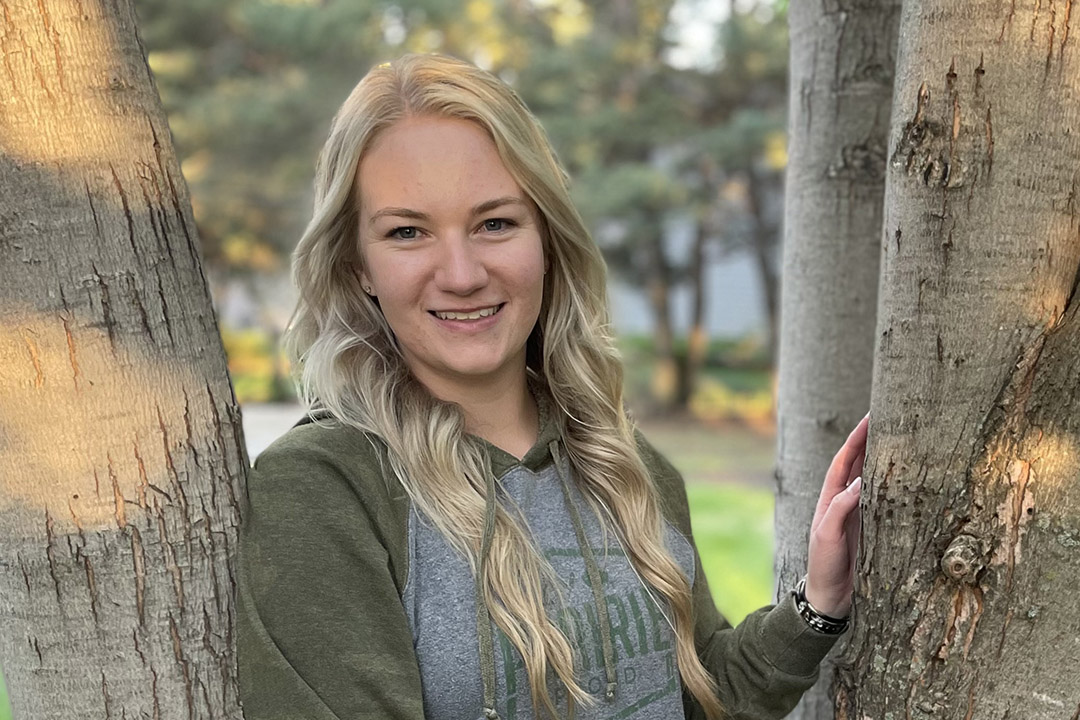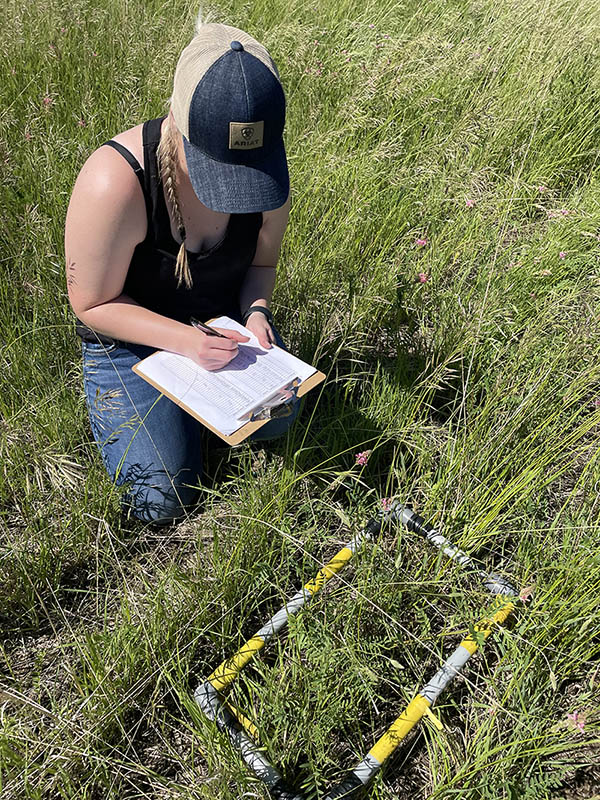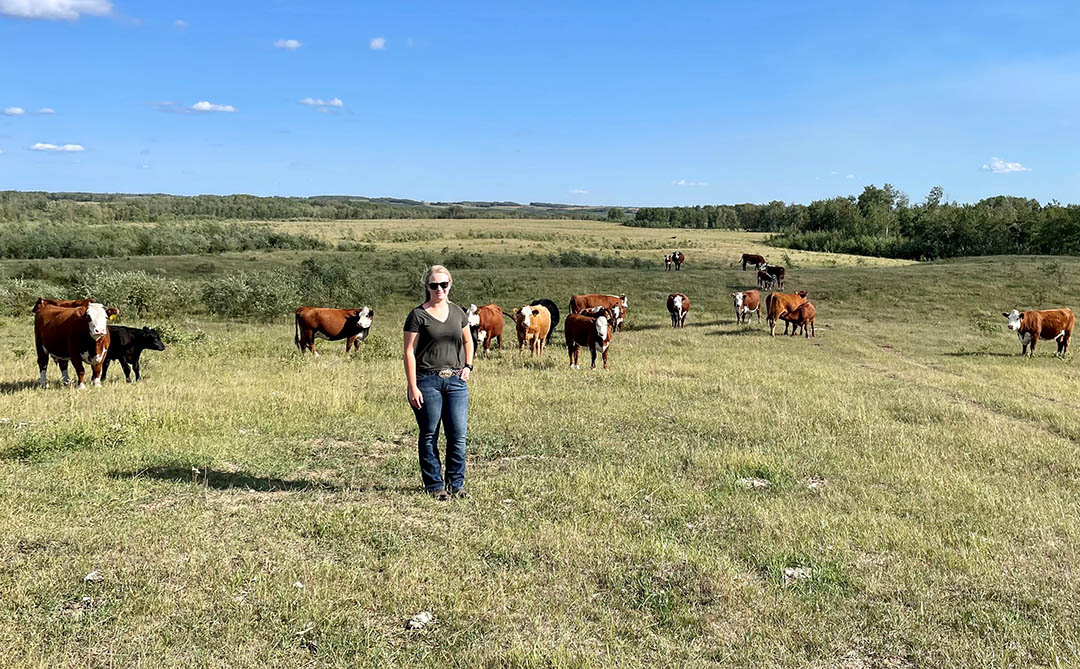
USask research: Finding feed solutions for drought conditions
With a history dating back more than a century through five generations of Métis farmers, Megan Wasden has a deep appreciation and connection to the land.
By JAMES SHEWAGA“The land is very special and very important to us, and that is a big part of being Indigenous,” said the University of Saskatchewan (USask) Master of Science student in the College of Agriculture and Bioresources. “Our land that we still farm on has been in our family for over a hundred years and I plan to keep it in the family for many more generations. So it’s very important and very special to me. We have farmed this land for many years and we have to keep producing off of it, so we have to treat it with respect for it to continue giving back to us.”
As this year’s drought conditions affected producers throughout the province, including dramatically reducing available feed for cattle ranchers, Wasden was working daily searching for more sustainable and hardier forage options that can survive and thrive in low moisture conditions. Wasden’s work—under the guidance of her graduate supervisor Dr. Bart Lardner (PhD)—has been centred at USask’s Livestock and Forage Centre of Excellence, with her research drawing attention from fellow scientists and producers alike.

“There is an awful lot of data being collected in this four-year field research study, but the real question in the agriculture community is, ‘What is the right combination of forage species for pasture that producers can seed in their farm or ranch?’ Are they perennial grass-legume mixtures? Or are they annual grass-legume mixtures? So that, in a nutshell, is her study,” said Lardner.
At the LFCE test plots, USask researchers like Wasden are investigating the benefits of combining perennials and annuals in various mixes of grasses and legumes, everything from barley, alfalfa, hybrid bromegrass and peas, to fall rye and clover. Finding more sustainable, nutritious, cost-efficient forage mixes that also promote productive cattle growth while limiting methane emissions, would provide producers with better tools to withstand more frequent future drought conditions due to the effects of climate change across the Prairies.
Wasden’s research has the potential to provide effective real-world solutions for producers, while also considering climate change, sustainability, water security and economic impacts.
“With changing (climate) conditions, we are looking specifically at which plants do better with less moisture and which can survive better in drought conditions, and we are definitely seeing some systems that work well and some that do not,” said Wasden, who is now crunching the numbers after two years of gathering research data to begin writing her thesis. “We want the plants to provide nutrition to allow young cattle to grow and gain weight. At the same time, it is important to be sustainable. And with beef cattle production, we always have to consider the costs and the returns.”
Wasden’s graduate studies have been supported by two major scholarships at USask: the Indigenous Graduate Leadership Award ($16,000 plus two years of tuition) and the Keith Gilmore Foundation Prize for Beef Cattle Innovation ($10,000) for advanced studies leading to a career in the beef industry.
“I am very grateful to have been chosen to receive both of them. I cried when I got the emails about them, I was so happy,” said Wasden, who also completed her bachelor’s degree at USask. “They will help me immensely to afford the cost of tuition and living away from home. A lot of time students are placed under large amounts of stress just from being in school and one stress students shouldn’t have to face is financial stress. So I can’t thank the funders enough for these two scholarships.”
Lardner said Wasden was most deserving of the financial support and is one of his most dedicated graduate students.
“Coming from a farm background, Megan brought that to the program, and she has done a fantastic job each year,” said Lardner. “And she is also going to help me as a teaching assistant this fall too, and I saw that as a great stepping stone for her because I think her end goal is to come out of here with an advanced degree and then get into extension work with stakeholders and producers and teaching. So it’s a natural fit for her.”
While her research couldn’t be more timely, Wasden didn’t imagine it would be so applicable so soon, with producers searching for solutions after suffering through a devastating drought in 2021.
“I didn’t envision this at all, but we can now really test these forages in these severe drought conditions,” said Wasden, who has experienced the effects first-hand, while running her own small cattle herd back home in Spiritwood, Sask. “I have found a lot of people are very interested in this research, so that has been great. Hopefully we can provide some effective solutions for the future.”


